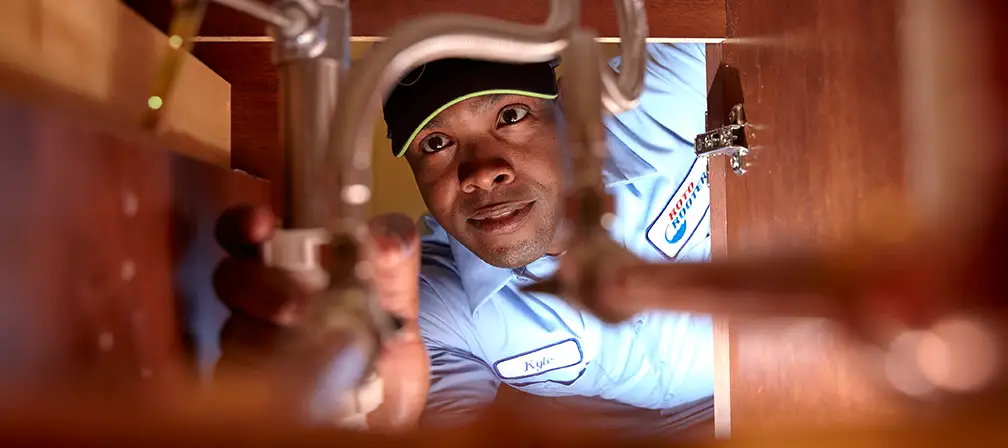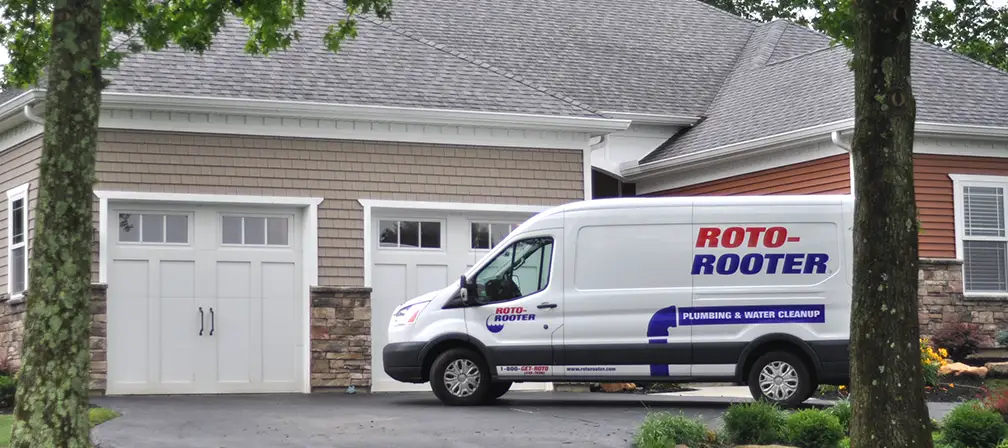1. Shut off your water supply.
The first and most crucial step in a water emergency is shutting off the water supply. If the problem is a broken sink faucet or toilet, look for a turn-off valve under the sink or beneath the toilet. Turn these valves clockwise to shut off the flow of water.
If necessary, you can turn off the main water shutoff valve. Be safe: Do not walk or wade through a flooded area to turn off your water main if your electric supply is active or electrical appliances are submerged.
For residences, the main shutoff valve is usually close to the front of the home, although it may be located in your garage, by your water meter, or in the closet. Turning the valve clockwise shuts off the water supply to your residence. Shutoff values for commercial buildings are often located either along the perimeter of the building or inside and against an outer wall. Locate your main water shutoff valve before a water emergency so you know exactly where it is.
2. Shut off gas and electricity.
Water and electricity are a dangerous combination. If you can safely turn off your electricity, do so. If not, leave the water-affected area and let your plumber or an electrician turn off the power. The same is true for your gas main. If you know how to turn it off and can do so safely, do it. Otherwise, leave the task to a professional and leave the area if you think your gas supply is affected.
3. Turn off your water heater.
Turn off your water heater during a serious water emergency that threatens to flood the water heater, especially if you have to shut off your main water supply valve. Leaving the water heater on and the main valve off increases the risk the water heater will overheat and its heating element will be damaged.
4. Identify the water source.
Try to identify the source of the leak or flood. Often, the source of the problem is obvious: an overflowing toilet commands your attention. Sometimes, however, finding the source of a water emergency is more complicated. Small leaks are difficult to spot, while broken pipes may be hidden in walls, below flooring, or in ceilings.
5. Take steps to contain the damage.
The faster you take steps to contain a water emergency, the lower your risk of severe water damage. You can use buckets to capture water from leaky pipes. Shutting off the water main stops a broken pipe from flooding your home further. Use towels to soak up water from minor floods, such as overflowing sinks. Do what you can to limit the spread of water safely, but leave anything involving gray water (dirty or contaminated water) or black water (sewer-contaminated water) to the professionals.
6. Clear the surrounding area.
Clearing the area has two meanings. It can mean emptying under-sink cabinets to allow your plumber easy access to the source of the water problem. For major emergencies such as sewer backups, floods, or any situation where water and electricity mix, it means staying out of the affected area for your safety.
7. Call an Emergency Plumber
DIY solutions are not recommended for serious water emergencies. Well-intentioned attempts to fix a significant water problem may worsen an already bad situation, lead to issues with insurance claims, or even put people at risk of physical harm. When you need an emergency plumber in Atlanta, call us. We’ll be there to help as soon as possible. Check out 4 Reasons You Need an Emergency Plumber for more information.



